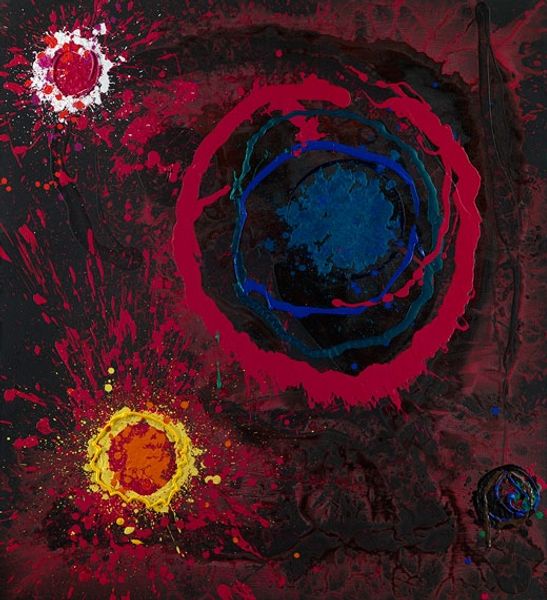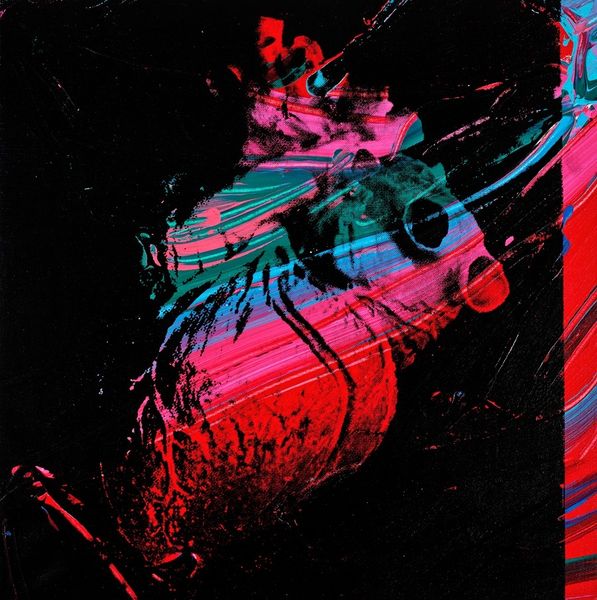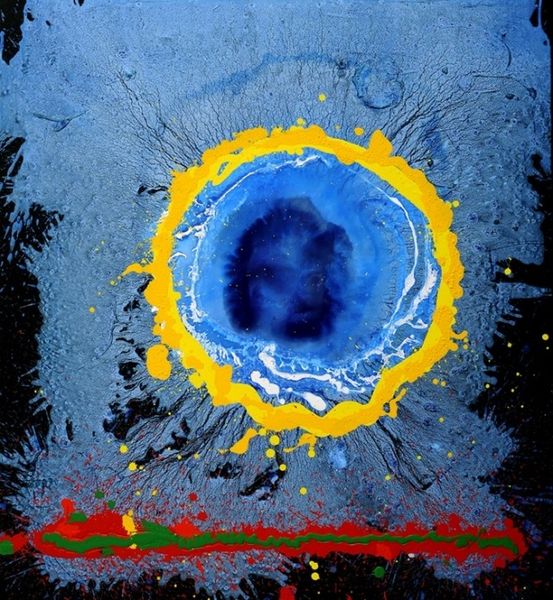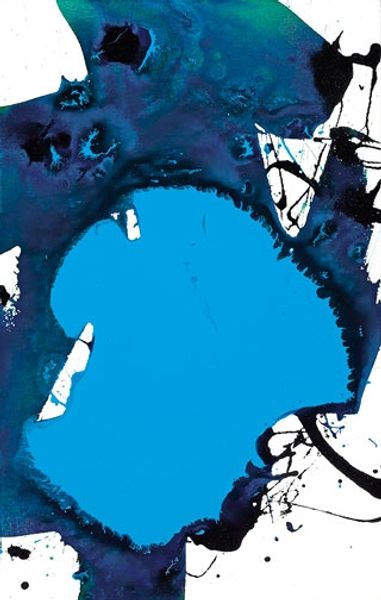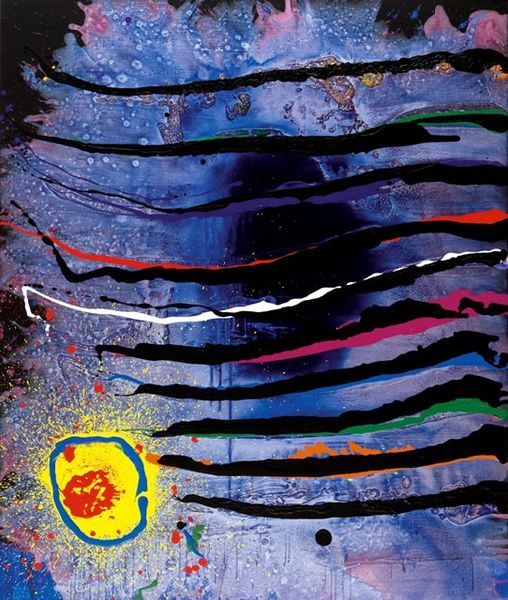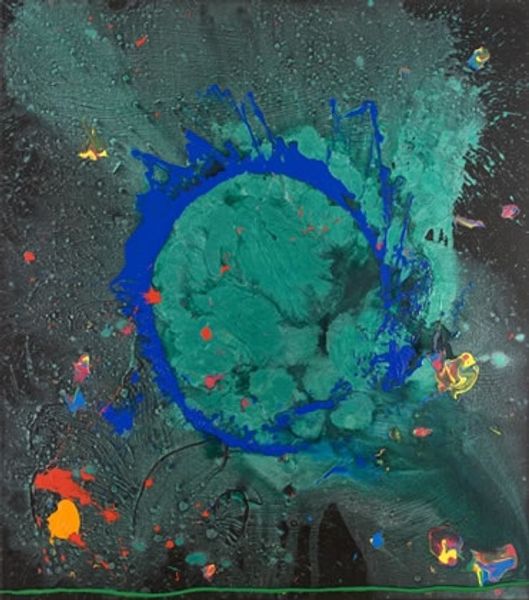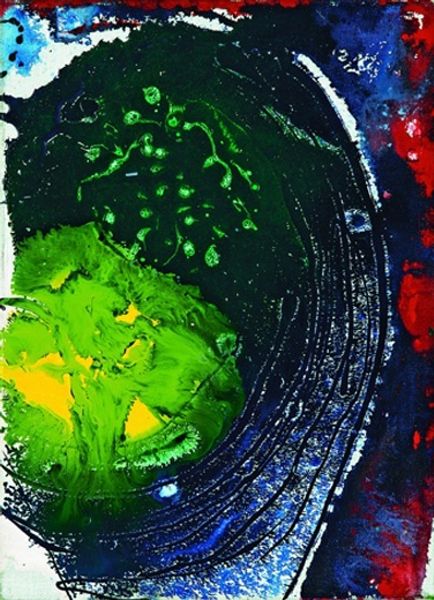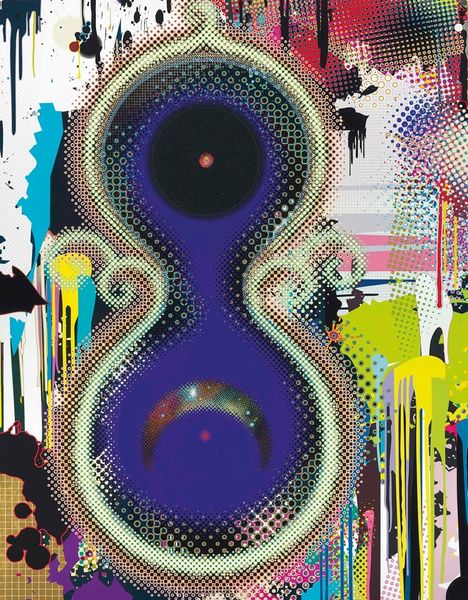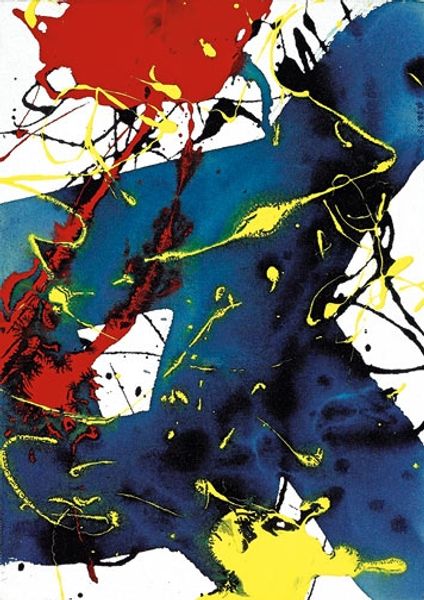
Copyright: John Hoyland,Fair Use
Curator: Look at this artwork from 2008: "Eyes That Dream - 20.3.08 (Clifford Dies)" by John Hoyland. It is an acrylic on canvas. Editor: My immediate reaction is a sense of depth and mystery. The bold circular form pulls you in, almost like staring into an abyss. It is simultaneously chaotic and mesmerizing. Curator: Absolutely, and if we consider Hoyland's working method, we know his technique involves pouring and manipulating paint across the canvas, he actually often built structures to hold his canvas on angles while layering his works! This one certainly embodies a certain action and performativity. The material process is central here. Editor: It is true, and speaking about its impact, its creation reflects broader shifts in art institutions too. This piece exists partly because galleries and museums started giving space and legitimizing large-scale abstract painting as an expression of individuality. The drama within "Eyes That Dream" is amplified by our very experience of viewing it. It makes one wonder what gallery walls were thinking. Curator: That’s a key point, the relationship to institutions... And on closer inspection, the seemingly random drips and splatters suggest that that we are in fact dealing with intentional gestures of an engagement to matter and process. Think of the labour to achieve such “gestures”!. It pushes beyond mere decoration to address the very means of art production. Editor: It's amazing how the politics of display shape our understanding of seemingly non-political abstract work, the title seems somewhat irrelevant in comparison to our engagement in paint, doesn’t it? This discussion, ironically, is shaping our understanding. Curator: I find Hoyland’s attention to production techniques an inspiring invitation to examine assumptions of artistic process. Editor: Yes, and it speaks to how institutions create value and invite a response, and that has changed so much in art history.
Comments
No comments
Be the first to comment and join the conversation on the ultimate creative platform.

